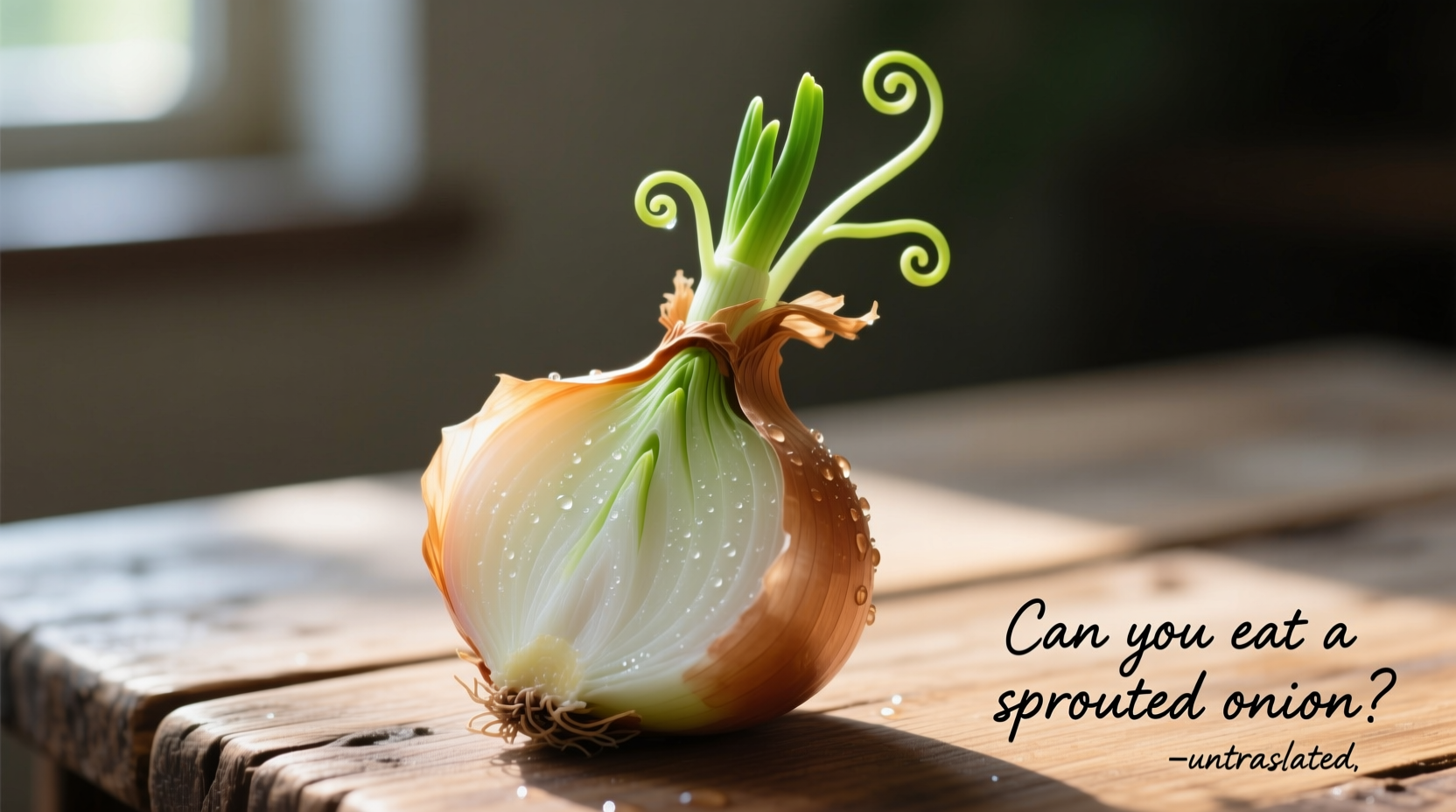Discover exactly when sprouted onions are safe to eat, how to prepare them properly, and creative ways to use every part of the onion—without wasting food or risking your health. This guide gives you the practical knowledge you need to make informed decisions in your kitchen today.
What Happens When Onions Sprout?
Onions sprout when stored in warm, humid conditions that mimic their natural growing environment. This biological process isn't spoilage—it's the onion's survival mechanism. As Antonio Rodriguez explains from his professional kitchen experience, "Sprouting simply means your onion is trying to reproduce. It's redirecting its energy from the bulb to grow green shoots, which changes texture and flavor but doesn't automatically make it unsafe."
The sprouting process begins when the onion's dormant phase ends. You'll first notice small green shoots emerging from the top center of the bulb. Over time, these shoots grow longer while the onion itself may become slightly softer as stored carbohydrates convert to energy for growth.
Safety First: When Sprouted Onions Are Safe vs. Unsafe
Not all sprouted onions are created equal. Your decision to use or discard depends on specific visual and sensory indicators. This fact comparison table helps you make the right call:
| Safe to Eat | Discard Immediately |
|---|---|
| Firm bulb with slight softening | Mushy, slimy texture throughout |
| Crisp green sprouts | Yellow, brown, or moldy sprouts |
| Normal onion aroma | Sour, rotten, or chemical-like smell |
| Intact dry outer skin | Visible mold or black spots |
| Minimal root growth | Extensive root system with decay |
According to USDA food safety guidelines, sprouted onions remain safe as long as they pass the firmness and odor tests. The critical factor is whether the sprouting process has created conditions for harmful bacteria growth, which typically happens only when the onion becomes soft and mushy.
Step-by-Step: Preparing Sprouted Onions for Cooking
When you've determined your sprouted onion is safe to eat, follow this professional chef-tested preparation method:
- Remove the sprouts by gently pulling them from the center. Don't force them if they resist.
- Peel away any dry, papery outer layers that have become discolored.
- Inspect the layers beneath for soft spots or discoloration.
- Cut away any soft sections while keeping firm portions.
- Rinse thoroughly under cold water to remove any residual soil.
- Use immediately as sprouted onions have reduced shelf life.
The green sprouts themselves are completely edible and pack a mild onion flavor with fresh herbal notes. Chefs often use them as a scallion substitute in salads, omelets, and garnishes. Simply chop them finely and add at the end of cooking to preserve their delicate flavor.

Culinary Applications: Best Uses for Sprouted Onions
Sprouted onions work best in certain cooking applications due to their slightly altered texture and flavor profile:
- Soups and stews - The softer texture blends well in liquid-based dishes
- Caramelized onions - Extended cooking masks any textural changes
- Onion powder - Dry and grind firm portions for homemade seasoning
- Green sprout garnishes - Use the shoots like chives on finished dishes
- Pickled onions - The vinegar process revitalizes slightly soft onions
Avoid using significantly sprouted onions in recipes where raw onion texture matters, such as salads or fresh salsas. The bulb's texture becomes less crisp as it diverts energy to the sprouts.
Maximizing Shelf Life: Preventing Onion Sprouting
Understanding the sprouting timeline helps prevent waste. Onions typically begin sprouting 30-45 days after purchase when stored improperly. Follow these evidence-based storage techniques from Cornell University's food science department:
- Store in a cool, dark place between 45-55°F (7-13°C)
- Maintain low humidity (65-70% relative humidity)
- Ensure good air circulation using mesh bags or baskets
- Keep away from potatoes which emit sprouting-promoting gases
- Never refrigerate whole onions (except sweet varieties)
When stored properly, onions can last 2-3 months before showing signs of sprouting. Once sprouting begins, use within 7-10 days for best quality.
Common Questions About Sprouted Onions
Here are answers to frequently asked questions about using sprouted onions:











 浙公网安备
33010002000092号
浙公网安备
33010002000092号 浙B2-20120091-4
浙B2-20120091-4